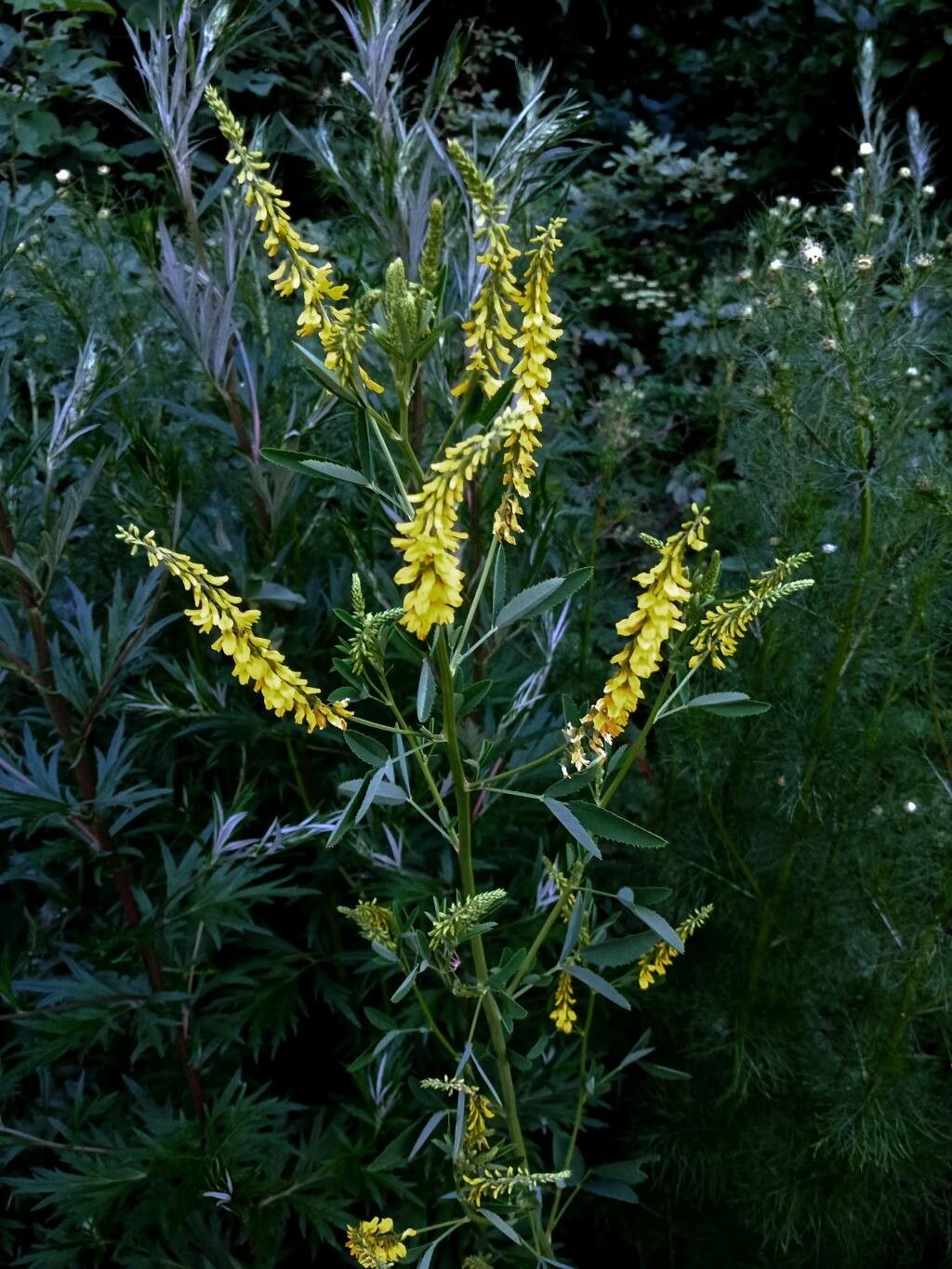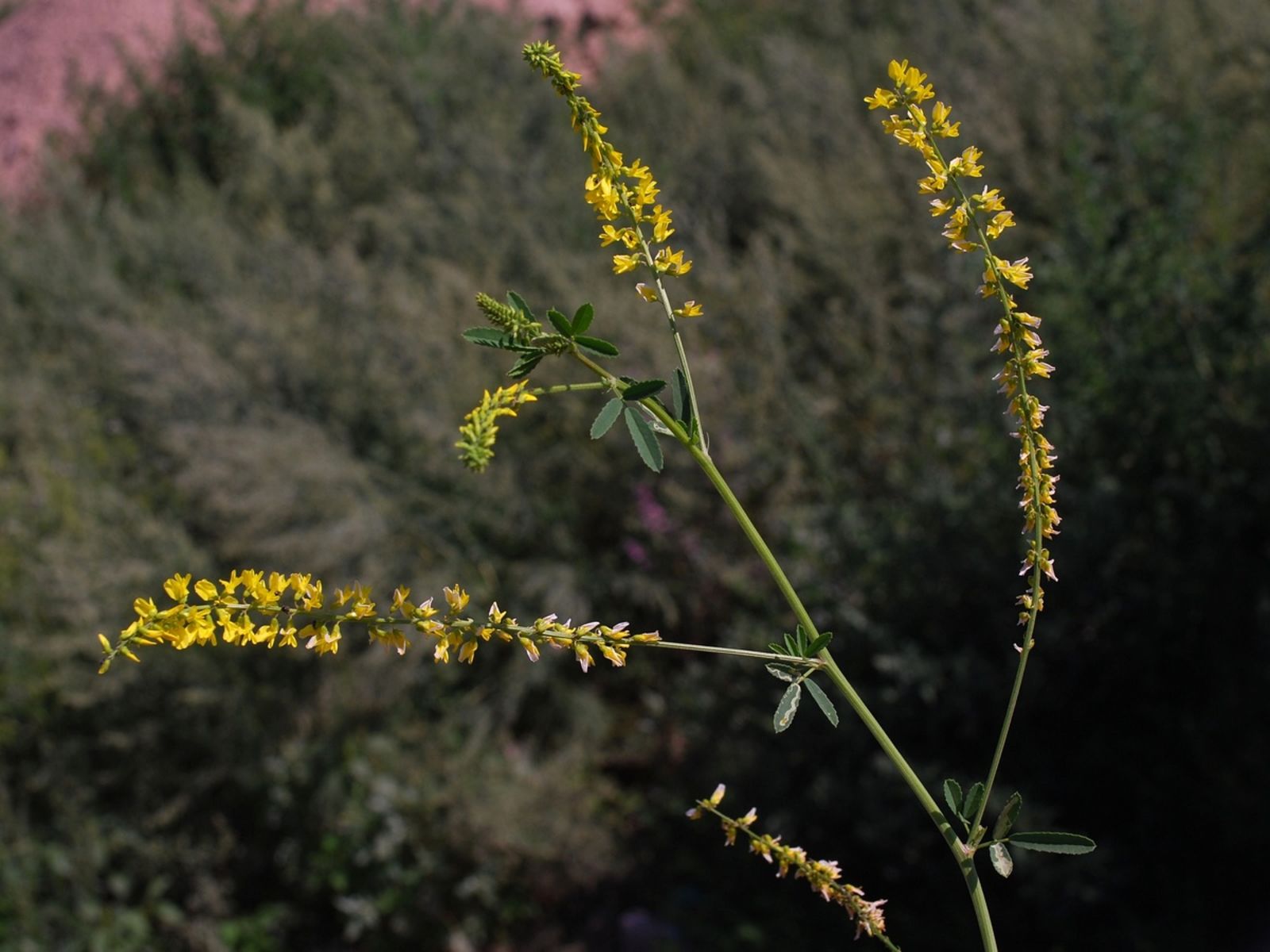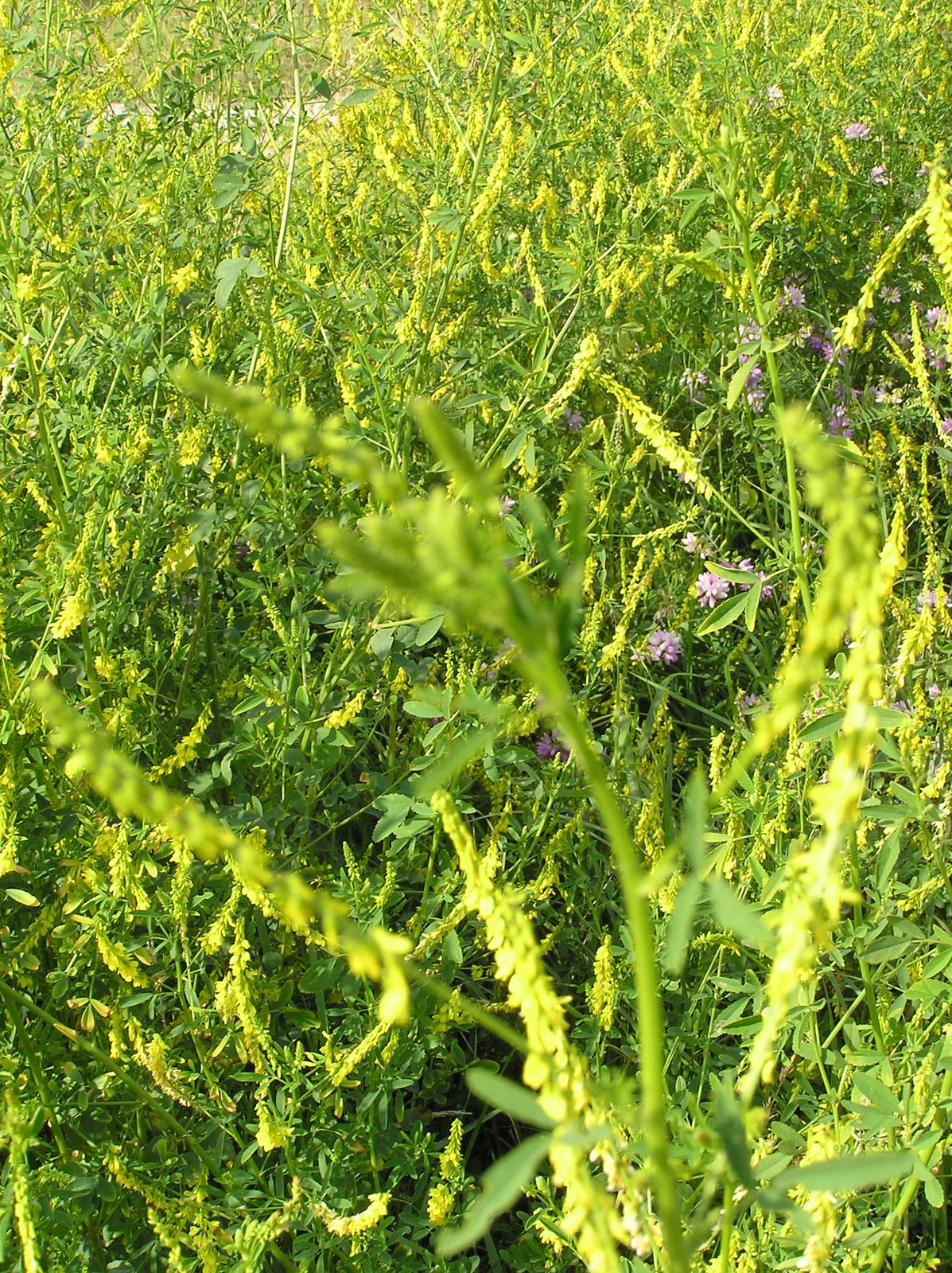Yellow Sweet Clover
melilotus officinalis
Also known as: ["Common Melilot","Yellow Melilot"]
Overview
A leguminous plant with yellow flowers, often used in herbal medicine and as a forage crop.
Benefits & Perks
["long-flowering","wildlife attractant (bees, butterflies, birds)","drought tolerant"]
Botanical Classification
| Phylum: | Magnoliophyta |
| Class: | Magnoliopsida |
| Order: | Fabales |
| Family: | Fabaceae |
| Genus: | Melilotus |
| Botanical Name: | Melilotus officinalis |
Plant Characteristics
Basic Information
- Category: Herbs & Weeds
- Suitable Location: open fields, meadows, or garden borders
- Suitable For:
- Is Weed: No
- Allergenicity: low
Environmental Needs
- Climate: {"temperatureRange":"–30–40°C"}
- Hardiness: {"zones":"3–9"}
- Misting: rarely required
- Drainage: Fast-draining to prevent waterlogging.
- Soil Type: Well-draining, loamy soil with added organic matter.
Maintenance Level
- Maintenance Level: low
- Toughness Level: high
- Pruning Frequency: Light pruning every 2–3 months during growing season; deadheading flowers as they fade.
- Pruning Intensity: Light to moderate; avoid heavy pruning unless necessary to control size.
Care Details
Ideal Sunlight Coverage:
Full sun (6–8 hours of direct sunlight daily); tolerates partial shade but may produce fewer flowers.
Sunlight Tolerance Tips:
Acclimate plants gradually if moving from shade to sun; protect from intense midday sun in hot climates; ensure good air circulation to prevent fungal issues.
Care Requirements
Care Difficulty
easyeasy
Sunlight
full sun
Rotate plants for even light exposure; use shade cloth in extreme heat; avoid placing near reflective surfaces that intensify sunlight.
Watering
every 7–10 days during active growth, less frequently in dormant periods
Water thoroughly but infrequently to encourage deep roots; avoid waterlogging; ensure soil dries slightly between waterings.
Soil
well-drained, moderately fertile soil
pH: Slightly acidic to neutral (pH 6.0–7.0).
Avoid heavy clay soils; ensure pots have drainage holes; test soil pH annually.
Temperature
Prefers moderate temperatures (60–75°F or 15–24°C); can tolerate cooler conditions but may become dormant in frost.
Avoid sudden temperature fluctuations; protect from cold drafts; ensure good air circulation in hot weather.
Fertilizing
every 4–6 weeks during spring and summer
Apply fertilizer to moist soil to prevent root burn; flush soil occasionally to prevent salt buildup; reduce feeding during dormancy.
Propagation
Methods
Stem cuttings or seed; cuttings root easily in warm conditions.
Step-by-Step Propagation Guide
- Take a 4–6 inch cutting below a leaf node.
- Remove lower leaves.
- Dip in rooting hormone.
- Plant in moist medium.
- Keep humid.
Best Time: Spring or early summer when the plant is actively growing.
Environment
Warm (70–75°F or 21–24°C), humid, and bright indirect light.
Medium
Well-draining potting mix or perlite and peat moss mixture.
Hormone
Optional but recommended for faster rooting.
Timeline
Roots develop in 2–4 weeks; new growth appears in 6–8 weeks.
Tools Needed
Pruning shears, rooting hormone, small pots, misting bottle.
Quick Tips
Use clean tools to prevent disease; maintain high humidity with a plastic bag; avoid direct sunlight during rooting.
Pruning & Repotting
Pruning Guide
Method
Pinch back tips to encourage branching; cut above a leaf node or bud.
Pruning Plan
Prune to maintain shape, encourage bushier growth, and remove spent flowers to prolong blooming.
Tools
Pruning shears, sharp scissors, gloves.
Checklist
Clean tools before use; prune in early morning; remove dead or diseased parts; sterilize cuts if needed.
Repotting Guide
Best Season
Spring, before active growth begins.
Pot Size
Choose a pot 1–2 inches larger in diameter than the current one.
Method
Remove plant gently; trim roots if crowded; place in a clean pot with fresh soil; water lightly after repotting.
Suggestions
Repot every 2–3 years or when roots fill the pot; beneficial for nutrient replenishment and root health.
Checklist
Prepare new pot with drainage holes; use fresh soil mix; handle roots carefully; water after repotting.
Advanced Care Tips
Watering Mastery
Watering Checklist
Check soil moisture before watering; water early in the day; ensure proper drainage; adjust frequency by season.
How to Apply Water Properly
Water directly at the root zone until the soil is evenly moist but not saturated; allow excess water to drain freely; water in the morning to reduce evaporation and fungal risk.
Watering Schedule Tips
Water deeply once per week during active growth, reducing frequency in winter to every 2–3 weeks; adjust based on rainfall and soil moisture retention.
Soil Improvement
Add perlite or sand for drainage; incorporate compost for fertility; use mulch to retain moisture.
Temperature Stress Management
Signs of Temperature Issues
Wilting, yellowing leaves, stunted growth, or premature flowering in extreme heat or cold.
Cold Stress
Growth slows or halts; leaves may turn purple or brown; plant may enter dormancy or die if temperatures drop below freezing.
Solution: Mulch heavily around the base; move potted plants to a sheltered location; use frost cloth for protection in cold snaps.
Hot Stress
Leaves may scorch, wilt, or drop; flowers may fade quickly; growth may become leggy.
Solution: Provide afternoon shade; increase watering frequency; use mulch to retain soil moisture; mist foliage during extreme heat.
Fertilizing Guide
Fertilizing Checklist
Check fertilizer label for NPK ratio; water before fertilizing; apply evenly around the root zone; rinse tools after use.
Fertilizing Method
Use a balanced, water-soluble fertilizer diluted to half strength every 4–6 weeks during active growth; avoid fertilizing in winter.
Common Problems & Solutions
Toxicity Warning
Cats
Slightly ToxicCats are also susceptible to the anticoagulant effects of coumarin derivatives found in Melilotus officinalis, especially when ingested in large quantities or if the plant is moldy. This can lead to severe bleeding disorders.
⚠️ Symptoms:
🌿 Toxic Parts:
⚡ Toxic If:
if eaten in large quantities
Dogs
Slightly ToxicSimilar to humans, dogs can experience anticoagulant effects if they consume large amounts of Melilotus officinalis, particularly if the plant is moldy. The coumarin derivatives can interfere with blood clotting mechanisms.
⚠️ Symptoms:
🌿 Toxic Parts:
⚡ Toxic If:
if eaten in large quantities
Humans
Slightly ToxicMelilotus officinalis contains coumarin derivatives, which can lead to the formation of dicoumarol in the presence of certain molds. Dicoumarol is an anticoagulant that can cause hemorrhaging and other bleeding disorders when ingested in significant amounts.
⚠️ Symptoms:
🌿 Toxic Parts:
⚡ Toxic If:
if eaten in large quantities
Frequently Asked Questions
Q: Is Yellow Sweet Clover toxic to pets?
A: It is mildly toxic to dogs and cats.
Q: What are the uses of Yellow Sweet Clover?
A: It is used in herbal medicine and as a forage crop for livestock.
Q: Does Yellow Sweet Clover attract wildlife?
A: Yes, it attracts bees, butterflies, and birds.
Quick Reference
| Family: | Fabaceae |
| Care: | easy |
| Light: | full sun |
| Water: | every 7–10 days during activ |
Get Expert Care Tips
Download the Plantious app for personalized care reminders and plant identification!
Google Play App Store








